As I was pointing out in my previous post about certificates needed and other certifications on a voluntary basis it´s the so called “Sportbootführerschein” that you need in Germany officially. All the other certificates such as the SKS or SSS will only be mandatory when you want to charter a bigger boat or even open up a business as skipper. So, for me this Yachtmaster´s certificate was the first step in my own buildup of nautical, technical and practical skills as a freshly baked yacht-owner.
Theoretical education: Becoming a Yachtmaster in just 6 days?
Having chosen my sailing school of choice it was the fairly small amount of class-lessons that surprised me at first: Just two weekends with intensive classes will do? Really? Sitting on a bench alongside some 10 other would-be water-enthusiasts I was astonished of how much we could be taught in just one day: We learned 4 of the eight knots right on the first day along with the navigational basics such as true course, magnetic deviation and how to calculate and transfer them onto a chart.
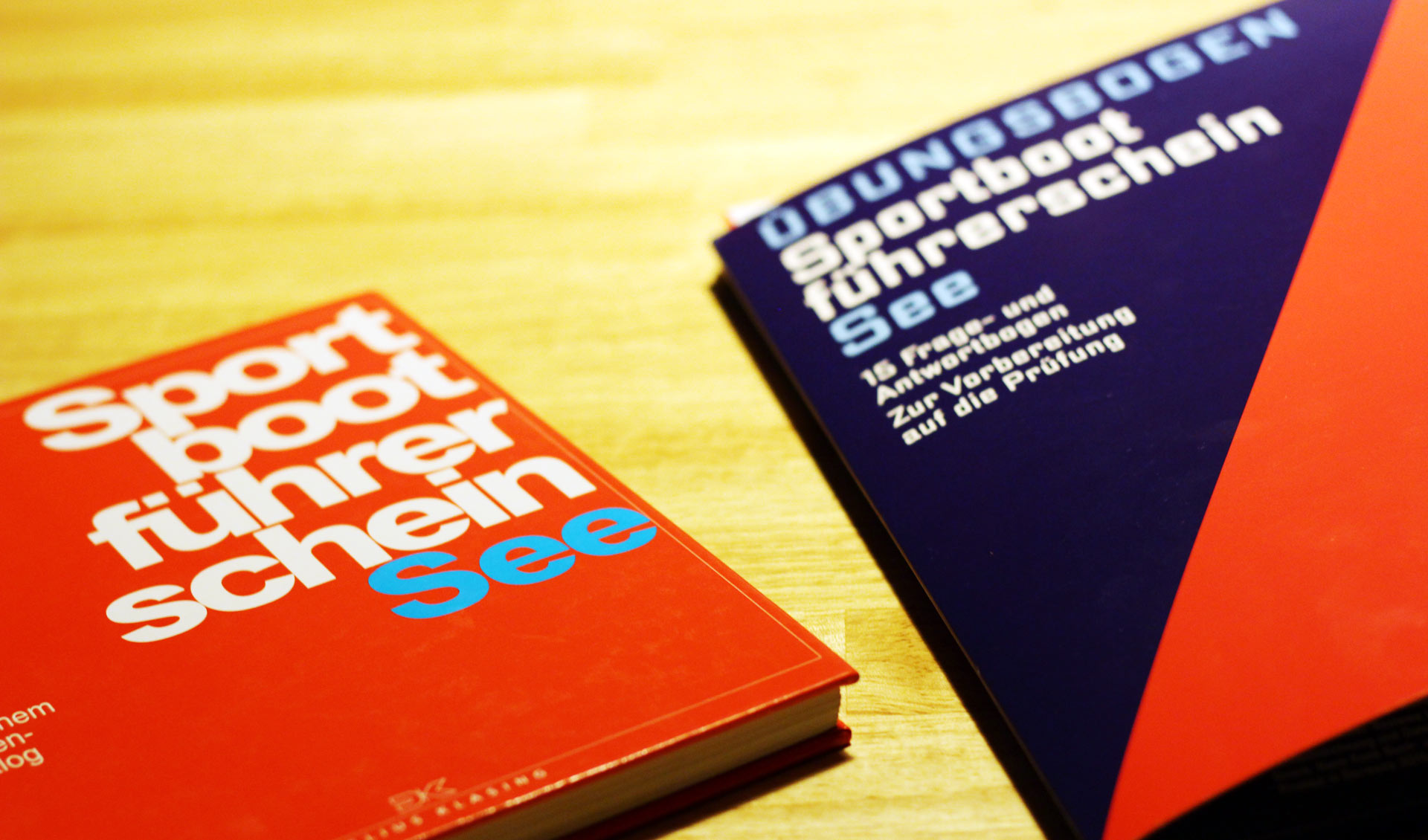
The next day we learned how to read a chart and interprete it in full detail, got to know the buoys (Lateral-A and Cardinal-System) what they look like during daytime and how they would operate during the night. Quick and very quick, flashing and Iso-Lights, sector-lights and all that stationary bling-bling that guides a skipper safely into the harbour. Or out. I was lucky having taken the invitation to join the 2-hour night-cruise in Hamburg harbour to see it all in real life and try to negotiate my way through the busy port at the helm of the very same boat I later would have to be trialed for practical exam.
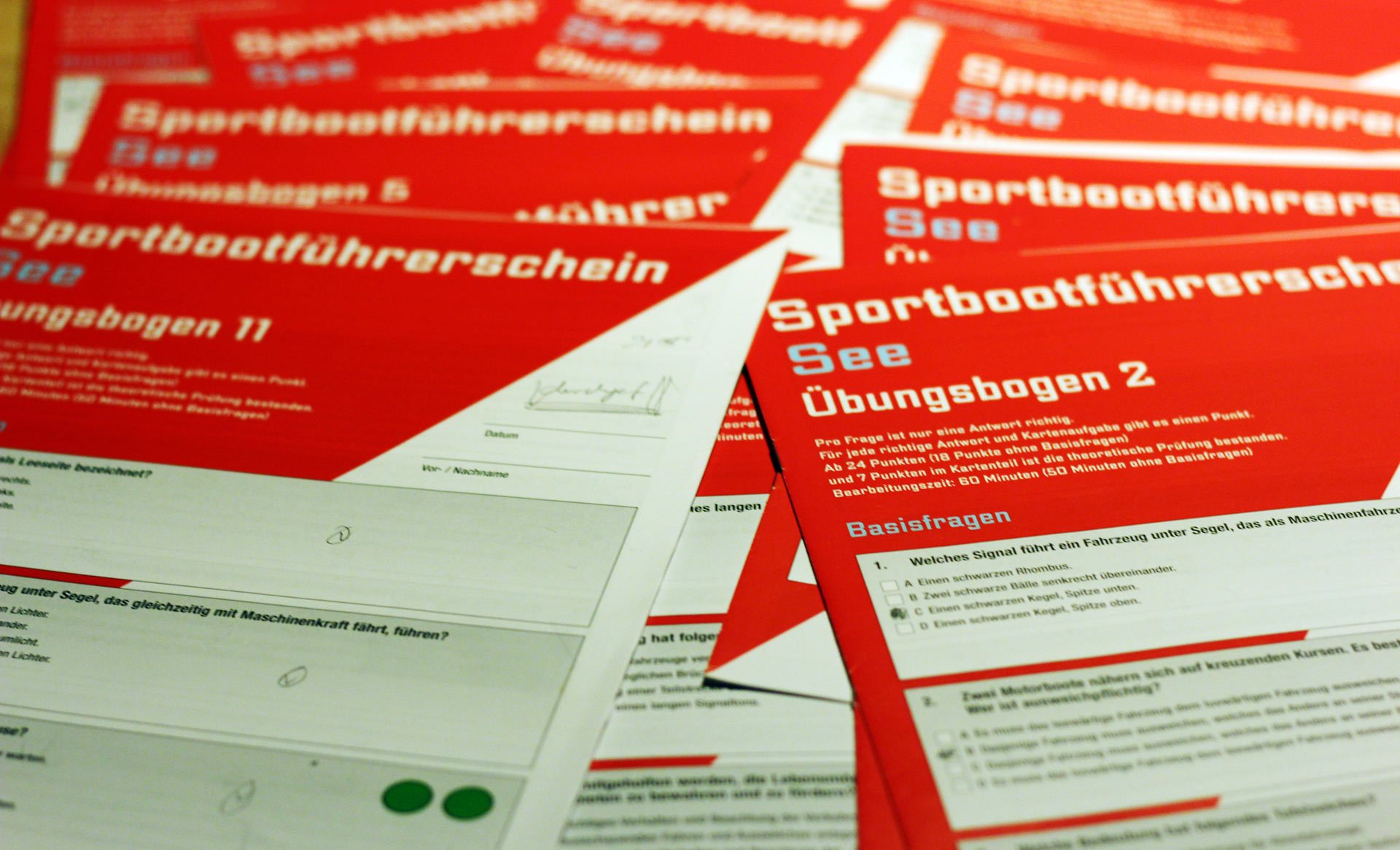
Another four knots and just two days later we´ve already learned how to navigate, how to identify and how not to collide with other waterborne traffic. Voila – that was quick! Thanks to our sympathetic teacher – a funny but straight old seafarer with a load of skilled experiences as skipper on blue water cruises – we really managed to work through all that stuff in just two weekends. Wow!
The practical part: Just 2 hours practice will do?
The practical part of Germany´s SBF exam consists of three stages: Show that you can do all the knots, do 6 (if I remember correctly) mandatory maneuvers such as casting off, mooring, stopping the boat due course, bearing directions, holding various compass-courses, turning on one spot and of course the well-famous MOB-maneuver.
They said, just one training-session will do.
They said, just 2 hours on board will do.
Of which I was going to steer the boat just roughly 40 minutes.
I simply had to agree because I didn´t have had more time anyway, so my lesson took place just two days prior to the exam. I was so curious. I already knew the boat a bit from the night cruise and when I boarded – greated by another funny seafarer – with two other, I wondered if the teacher could make us certificate-ready during the next 40 minutes. And what shall I say? He did!
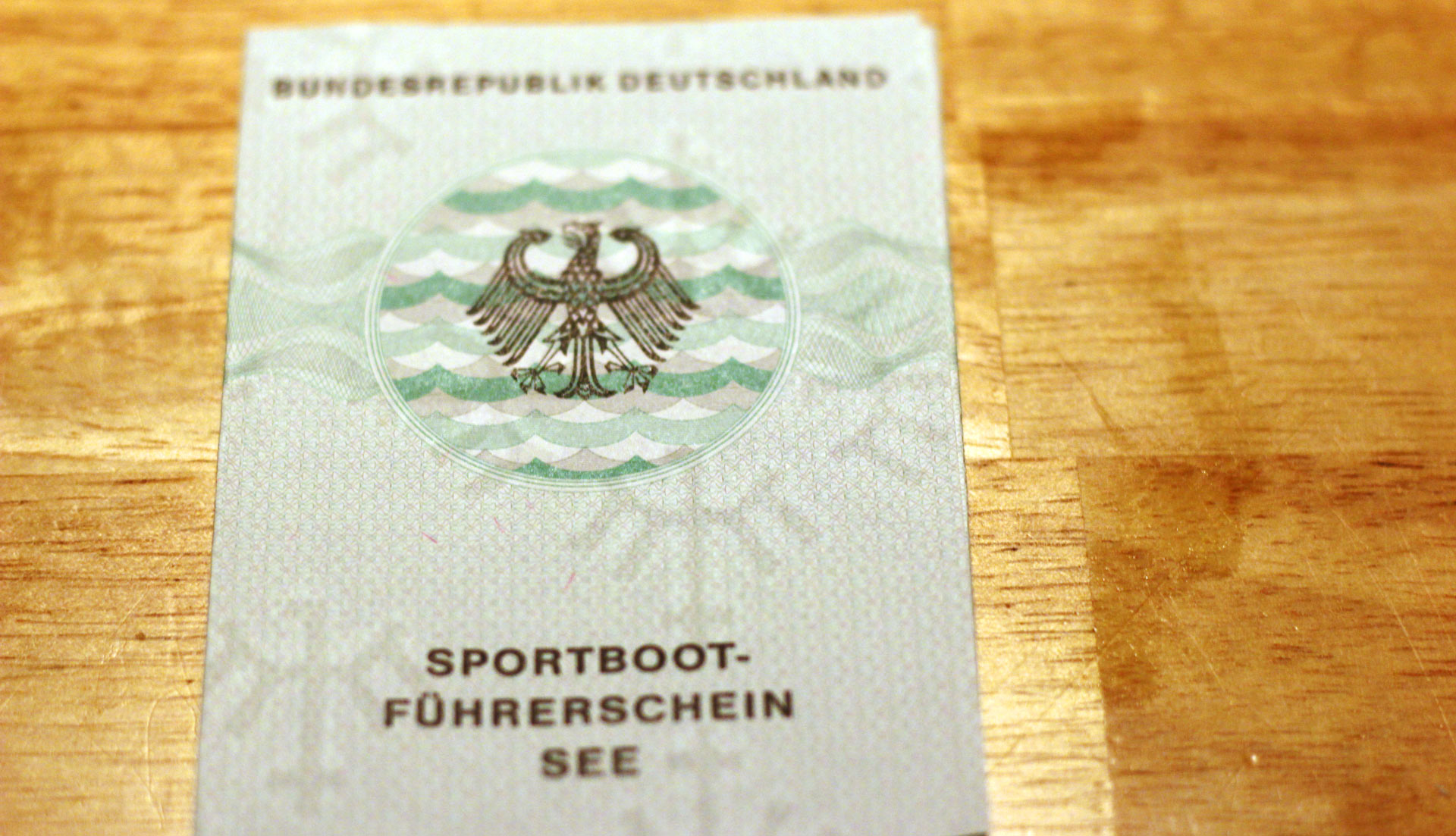
After watching casting off and mooring just two times, I was able to perform the maneuver with ease. MOB? No prob! It was 40 minutes pure joy and fun steering the boat inside Hamburg harbour on the training course.
Well, to be honest: Practical exam is a no-brainer if weather is on your side. The motorboat is extremely maneuverable and thus easy on the helm. For exam, it´s not speed that counts, it´s the scheme: “They want to see if you have a plan of what you do – nobody expects you to rescue the MOB within 30 seconds.”, the advisor told us. “So please don´t hustle. Everything in lowest gear. Take your time, just show you can do it.” With virtually no wind to blow you aside, no swell and no hurry it´s really no problem passing the test.
Before the exam: This is how I learned all that stuff.
Well, you guess it, it´s just not as easy as I do write about it here. The theoretical part alone consists of not less than 290 questions and thus 1.160 possible answers to choose from. And they are confusing! Two red lights horizontally mean “bridge or lock closed”, the same lights vertically mean “maritime building closed indefinitely”. And that´s a riddle of the easy kind.
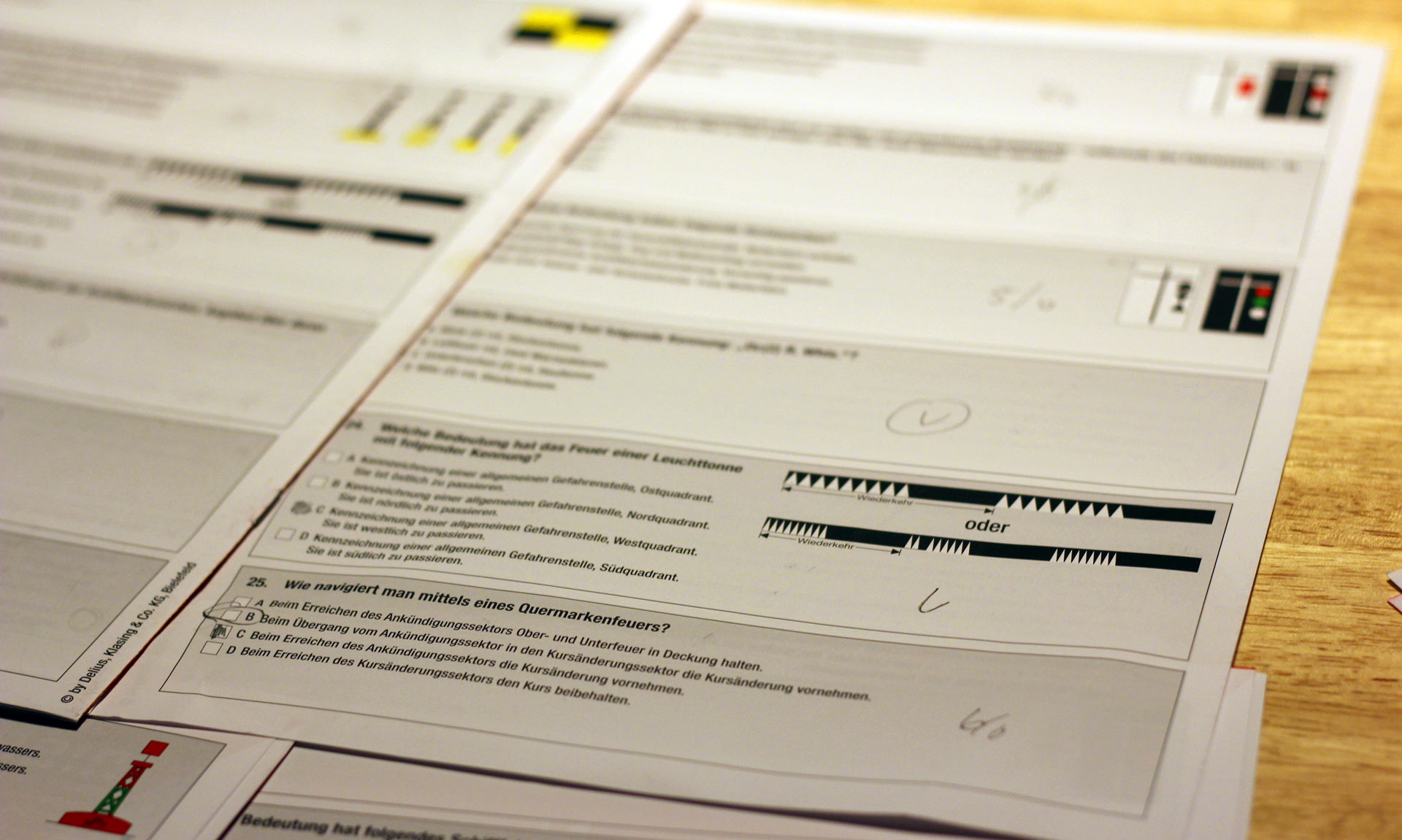
Besides filling out all of the 15 examination sheets and simulating the exam-day with stopwatch and passing-statistics (I passed 3 to 1 trial-exams) I downloaded an App for my smartphone and used virtually every free minute to hammer the right answers in my brain. On my commute to work, during spare time and lunch-break and even in the evening when nothing interesting was on TV (and that´s quite often) I was swiping my fingertips off to practice.
After having done all the sheets, it took me two hours to wipe off the pencil and work my way through again. So I filled them in twice. And went through the practicing App four times. In the end, on exam-day, my hands were shaking and I was totally confused. But I remembered one thing that was my death all the time whilst practicing: Don´t hustle! Take your time! Read fully through, let loose and be accurate.
So, exam day came as quick as anticipated.
Examination day: 150 applicants and heavy traffic on the water.
Arriving at the examination site I was puzzled of just how much people want to be yachtmasters in Hamburg. One of the officials told me they´d have not less than 150 applicants on that particular day alone! Wow.
Going through the theoretical part was much easier than feared. They didn´t handed me out the exam-sheet which I feared most and I could resolve all questions within 20 of the 60 minutes. I remained unsure of my answers with three questions but since you could fail to answer 6 of the 35 questions that´s a comfortable margin I thought.
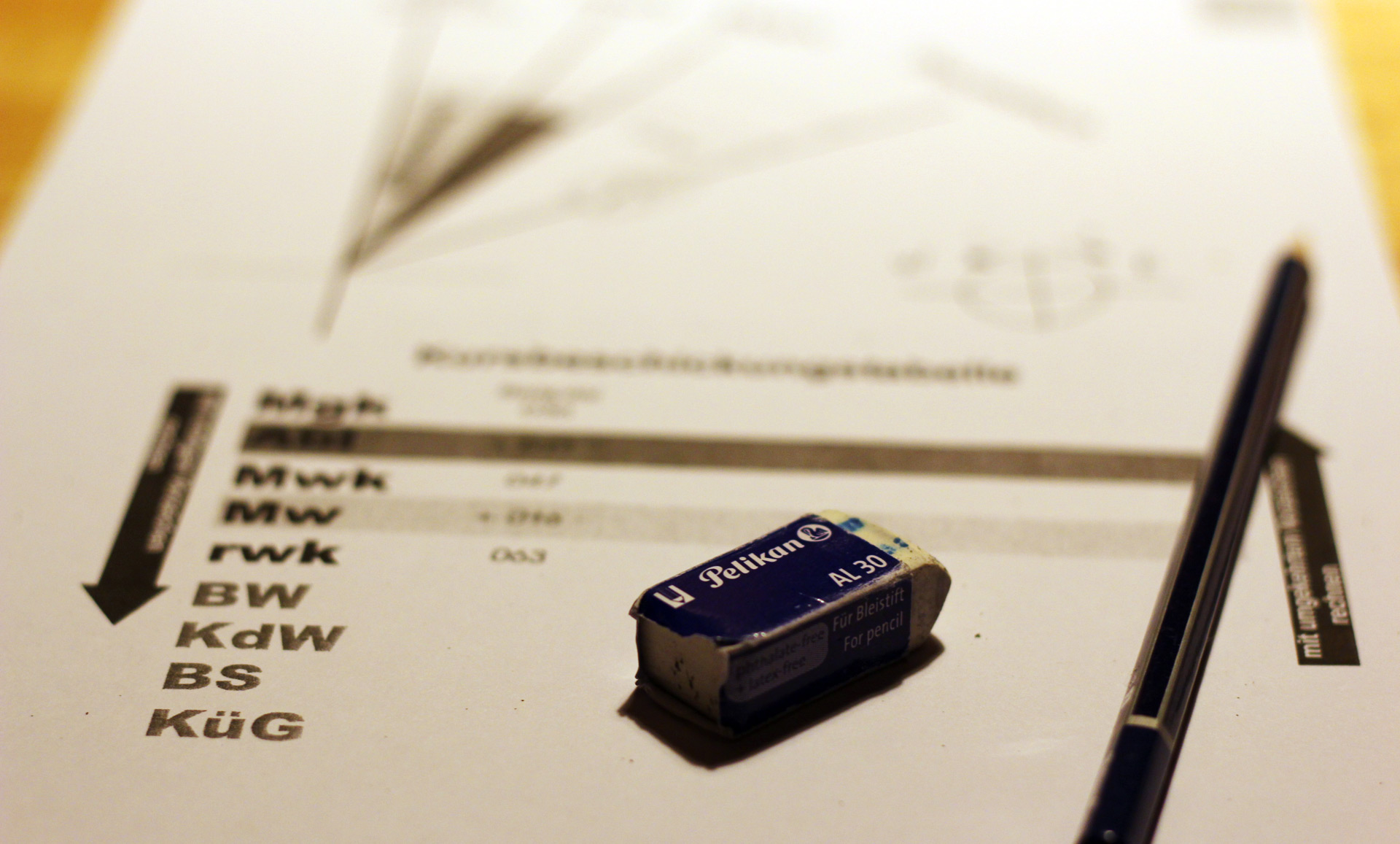
Going outside to do the practical exam I felt the tension disappear. I asked my three other exam-mates to be the first to be trialed and they agreed. When I took the helm I was very calm and focused, managed to ride the course and all maneuvers very smoothly and safe. Did 6 of the 8 knots and here we go: Got my passing-paper and went back to the examination committee.
Now the moment of truth arrived. Have I passed the theoretical part? After just 5 minutes of sheer endless waiting time they called in us four. There I knew it – we all have passed. And so they handed us our SBF-certification and … well … I am a sailor now. Officially.
Next stop: SRC certificate.
But don´t jigger. This official piece of paper means … well, nothing. Honestly, I can distinguish buoys, can do nice knot-works in multiple variations and cite rules of collision-prevention but going out onto the open sea is something very different. Well, I feel better now envisioning myself at helm of SY OLIVIA but there´s still so much to learn. Especially the practical side of sailing itself.

Sadly enough, it´s winter time now and there are no courses available. So I start with another rather theoretical – but nevertheless very useful – certification: The Short Range Communication-Certficate, SRC is my next aim. Beginning in late October I am truly looking forward to maybe meeting my old teachers again. Point of honour: I booked a class with my sailing school again.
What was your story in getting your first Yachtmaster´s certificate? I am looking forward to your story & comment.
